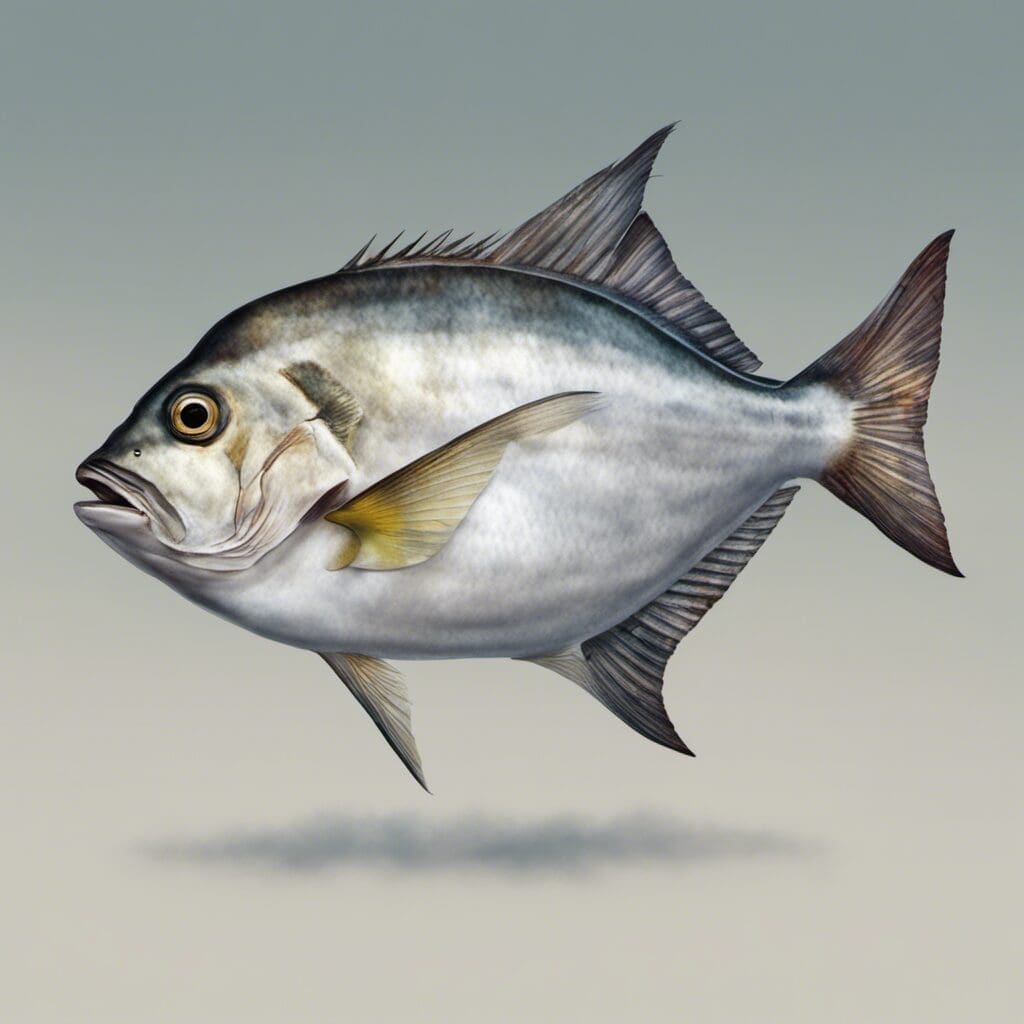Introduction
The Gafftopsail Pompano, scientifically known as Trachinotus rhodopus, belongs to the Carangidae family.
Conservation Status
The conservation status of the Gafftopsail Pompano is currently classified as ‘Least Concern’. This status is due to the species’ wide distribution.
| Current Status | Conservation Efforts |
|---|---|
| Least Concern | N/A |
Statistics
| Length (Average, Range) | Weight (Average, Range) | Average Lifespan | Other stats |
|---|---|---|---|
| 17-22 inches, Up to 25 inches | 2-3 lbs, Up to 8 lbs | 10-12 years | N/A |
Distribution
The species are known to frequent the waters of the western Atlantic ocean, from the U.S. Gulf and Caribbean to Brazil.
Migratory Pattern
These fish are considered a non-migratory species.
Habitats
| Water Type | Depth Range | Temperature Range |
|---|---|---|
| Salty | 0-20 meters | 24-28°C (75-82°F) |
When and Where to See
The Gafftopsail Pompano is active throughout the day and can usually be spotted near the water surface.
Seasonal Patterns
These fish can generally be found all year round, but they are most prevalent in late Spring.
Best Fishing Locations
The top ten places to find the Gafftopsail Pompano includes coastal areas and estuaries in Florida, The Gulf of Mexico, the Caribbean, and off the coast of Brazil.
How to Catch
Anglers often use live shrimp or mullet as bait. Usual techniques involve bottom fishing or trolling.
Identification Guide
Gafftopsail Pompanos have a silver-grey body with a dark patch near the gill cover. They have a streamlined shape and a forked tail.
Culinary
Gafftopsail Pompano is recognized for its fine, delicate flavor and a texture that is neither too fatty nor too lean. They are usually grilled or baked.
Additional Information
Gafftopsail Pompanos are ferocious feeders, taking on small, schooling fish. Natural predators are large, predatory fish such as sharks and barracuda.

